LAS VEGAS — The International CES has ended for another year and has given us a glimpse at the technology we’ll be seeing for the next 12 months and beyond. In the audio realm there were a handful of surprises — especially from Google, which doesn’t even exhibit at the show. But this was more of a year when previous trends were consolidated and ratified.
Specifically, wireless multiroom audio streaming is now a full-fledged subcategory; Bluetooth audio is now dominant, especially for headphones; and high-resolution music is once again trying to take down the MP3 format. (And in some cases, these trends are mixing in the same products.)
The biggest audio disappointment of the show for me? Dolby Atmos.
Multiroom streaming
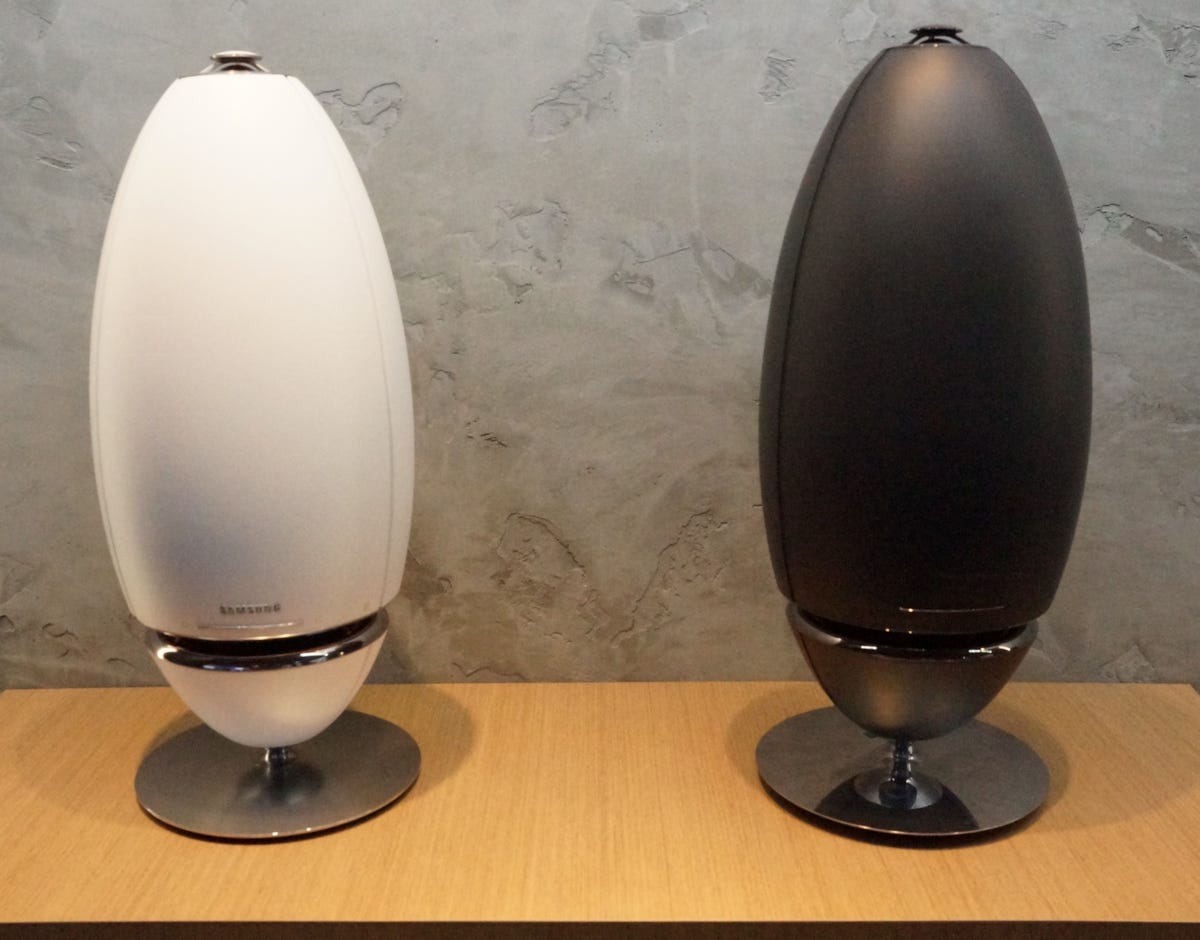
Ty Pendlebury/CNET
The biggest surprise in Las Vegas was the announcement of Google’s new streaming protocol based on Chromecast and called simply ” Google Cast.” It aims to compete with the likes of Apple AirPlay by making it possible to stream music straight from a smartphone to compatible speakers.
One of the first companies to announce support was Sony with its new STR-DN1060 and STR-DN860 receivers , as well as a set of dedicated streaming speakers. LG’s Music Flow and Denon Heos are also on board. Meanwhile, Sony also debuted its own streaming feature called SongPal Link, which works in a similar way to these other technologies: Wi-Fi streaming via a smartphone app.
The multi-room speakers of CES 2015
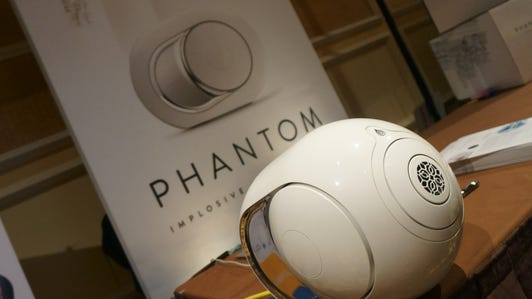





Apart from Google and Sony most of this year’s technologies were already out of the bag — DTS’ Play-Fi, Spotify Connect, Qualcomm’s AllPlay — and there were a smattering of new devices to go with them. Philips announced dedicated Spotify speakers, Harman Kardon had an AllPlay sound bar and even high-end brand McIntosh was showing off its Play-Fi MB50 media streamer.
All of this competition means that traditional audio brands really have the long knives out for Sonos, the savvy upstart that has dominated consumer multiroom streaming audio for at least the past half decade.
Hi-res
High-resolution music is anything that is recorded at a higher bit rate than standard CDs, and its proponents say that it sounds closer to the live performance as it’s capable of capturing and disseminating more information. (It also, of course, sounds far better than the AAC and MP3 audio that most of us have been listening to since the iPod days.) The main format of choice is FLAC, but popularizing hi-res has been a struggle ever since the days of the physical SACD and DVD-Audio disks.
While Sony was pushing its hi-res message pretty hard — and especially during its keynote presentation on Monday — it was the appearance of “face of hi-res” Neil Young at the show that attracted the most interest.
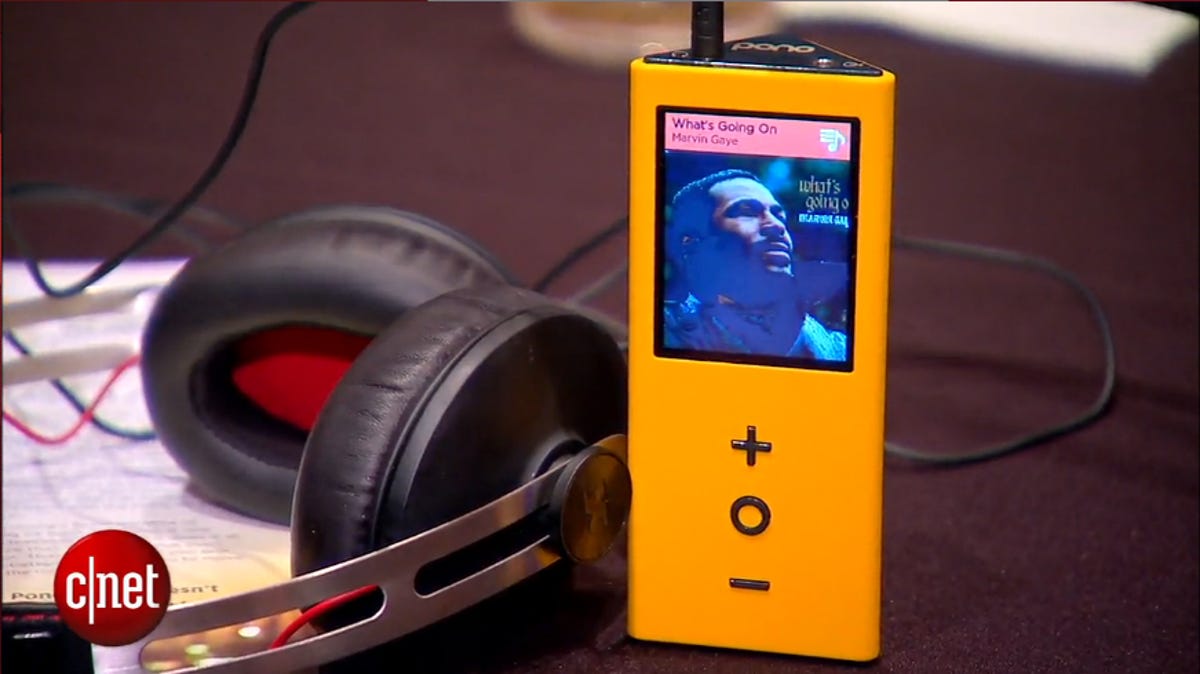

Screen capture by Lori Grunin/CNET
Young’s Pono music ecosystem has been teased for years and so it was a surprise to learn this week that not only were players going to shortly start appearing in stores like Fry’s but that the company’s music store was also open for business.
While I listened to the PonoPlayer on the show floor (video), and liked it especially for its interface, it’s hard to gauge how the public will react, especially given all of the hyperbole surrounding the product over the years. If you go in expecting to be blown away, it’s like really looking forward to New Year’s Eve only to be disappointed. Again. As my colleague Steve Guttenberg says, “High resolution is about subtlety.”
Also of note was Sony’s ZX2 Walkman, which is priced at a significant premium but offers something the PonoPlayer doesn’t: streaming. With fewer people buying music and more people paying for streaming subscriptions, it’s players like the ZX2 that will more readily fit into what is inevitably the future.
While there aren’t currently any hi-res streaming services, Tidal has said it plans to bring hi-res music to its collection and doesn’t currently plan to charge an additional fee for it.
Dolby Atmos
Given the current lack of software, it wasn’t completely surprising to see a muted reaction to Atmos at CES; no new receivers announced Atmos capability. Onkyo had some gear out on display in the Gibson tent but it was all from 2014, including the add-on Atmos speaker modules.
Related Links
- The PonoPlayer, what’s up with that?
- Best of CES 2015 wireless speakers
- Tidal ups the ante for streaming-music sound quality
- Dolby Atmos at home: Ears on
- What is FLAC? The high-def MP3 explained
But considering the beatdown that related technology Dolby Pro Logic IIz received after its launch, it’s natural to see skepticism at the prospect of even more “height channels,” the extra speakers designed to add a vertical component to surround sound.
To further confuse things, Dolby’s competitor DTS unveiled its own format called DTS:X in the lead-up to the show. Like Atmos, DTS:X is object-based, not channel-based, and this means that a movie maps each sound effect in 3D space and your system adapts and plays the sound based on where your speakers are. While nothing of note was announced at CES, the receivers will start coming online in March.
Based on several Dolby demos and an Atmos system in the CNET studios — set up by speaker designer Andrew Jones himself — I’m still undecided about this technology. Some people may be more sensitive to height information than me, but I’ve found it’s almost as subtle as the benefits of hi-res over CD quality audio. It’s going to be hard convincing people to buy more speakers in order to support only a handful of movies.
That said, Atmos’ greatest hope is that it’s not tied to a physical disc format: streaming and headphone versions are also available.
Headphones going wireless in a big way
Bluetooth speakers have been a CES mainstay for years, but they’re now the “me too” commodities that are taken for granted in nearly every booth. And while wireless Bluetooth headphones are also old hat at CES, they seemed even more ubiquitous this year, especially with more established brands like Sony and Sennheiser dominating their new lineups with wireless models.
The best new wireless Bluetooth headphones at CES 2015
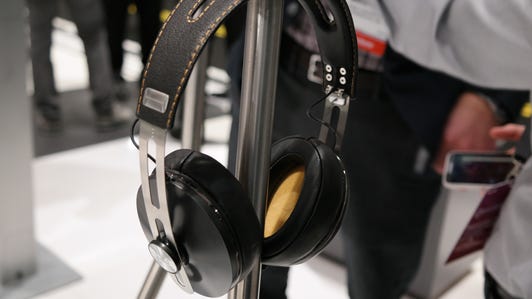

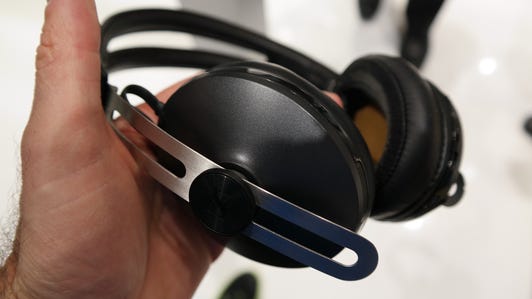



Setting the stage for 2015
While Pono made a big splash at this show, it is surely going to look as dated as the now-sadly-defunct iPod Classic in the coming years. While there will still be a place for non-networked players, the future of sound is undoubtedly streaming as we all forgo physical collections of music for our infinite playlists in the ether. Our phones have become our lives, and now with the combination of streaming and multiroom audio they can become our stereo systems as well. While there is still a place for dedicated AV systems, the advent of even more proprietary formats like Atmos can only see people fleeing in the opposite direction for the simplicity and flexibility that multiroom audio offers.
But one thing is for sure: expect to see a long list of wireless multiroom systems, hi-res audio players, Bluetooth speakers and Bluetooth headphones — not to mention some good old AV receivers, speakers and soundbars — reviewed here at CNET in 2015. For now, see all CNET’s coverage of audio news at CES 2015 here.
[Editor’s note 1/10/2015: An earlier version incorrectly stated the Harman/Kardon Omni soundbar contained an AllPlay chipset but it uses Blackfire Research wireless media technology instead.]



